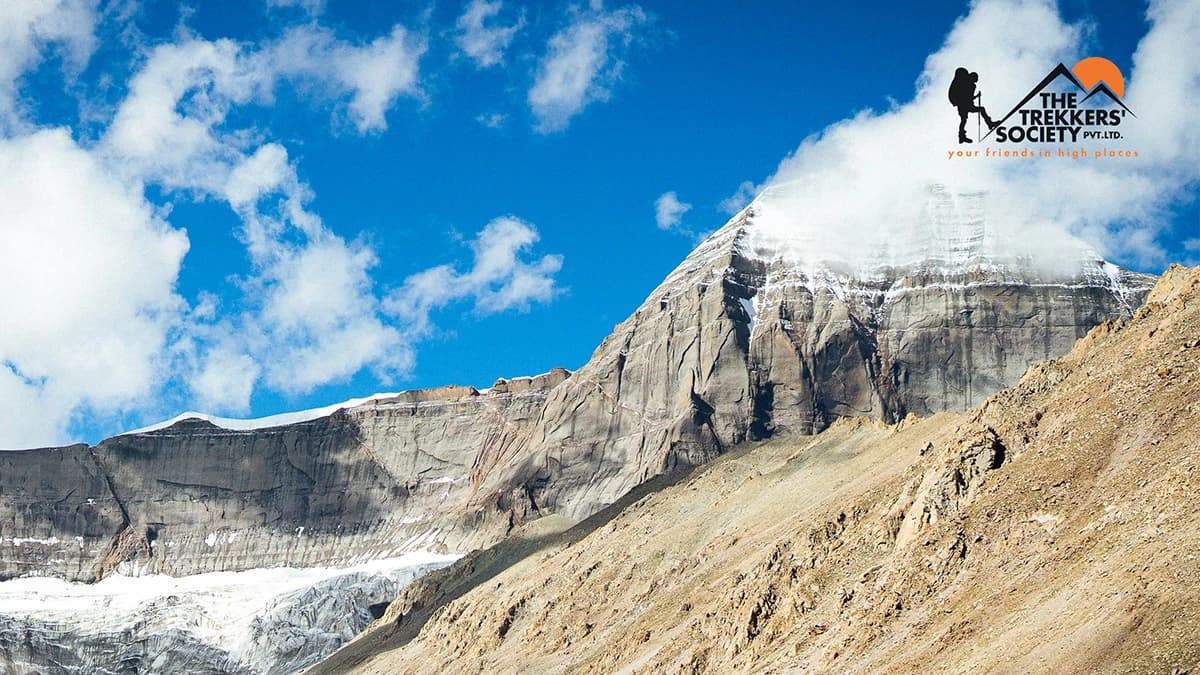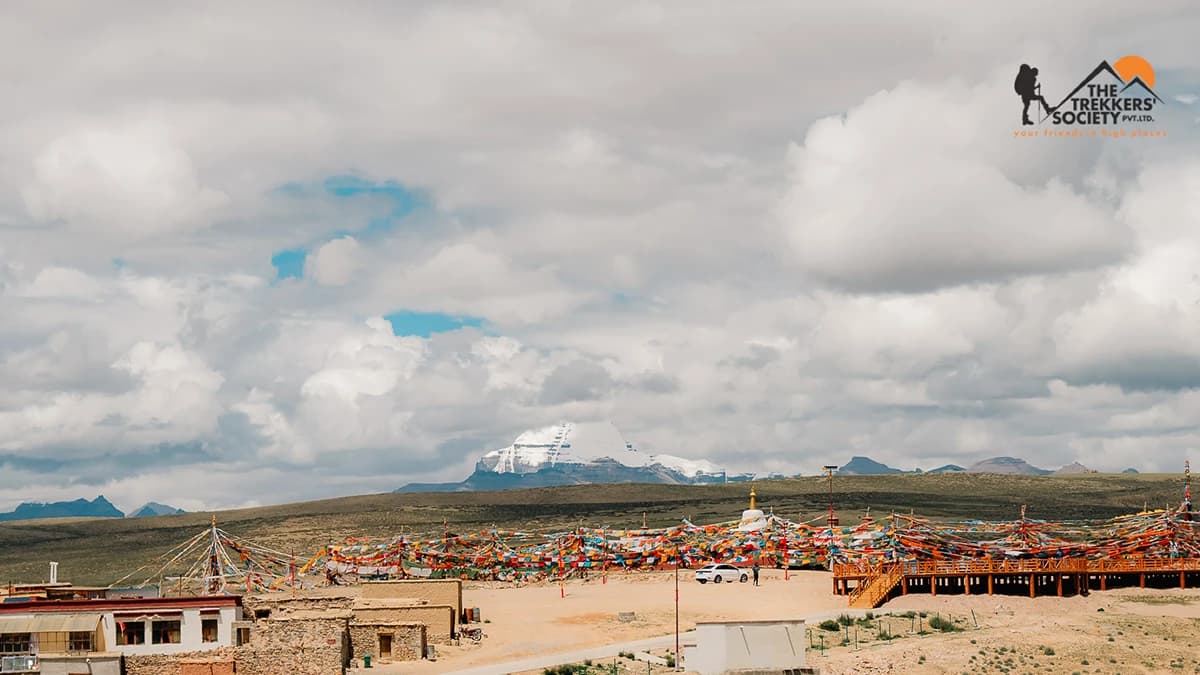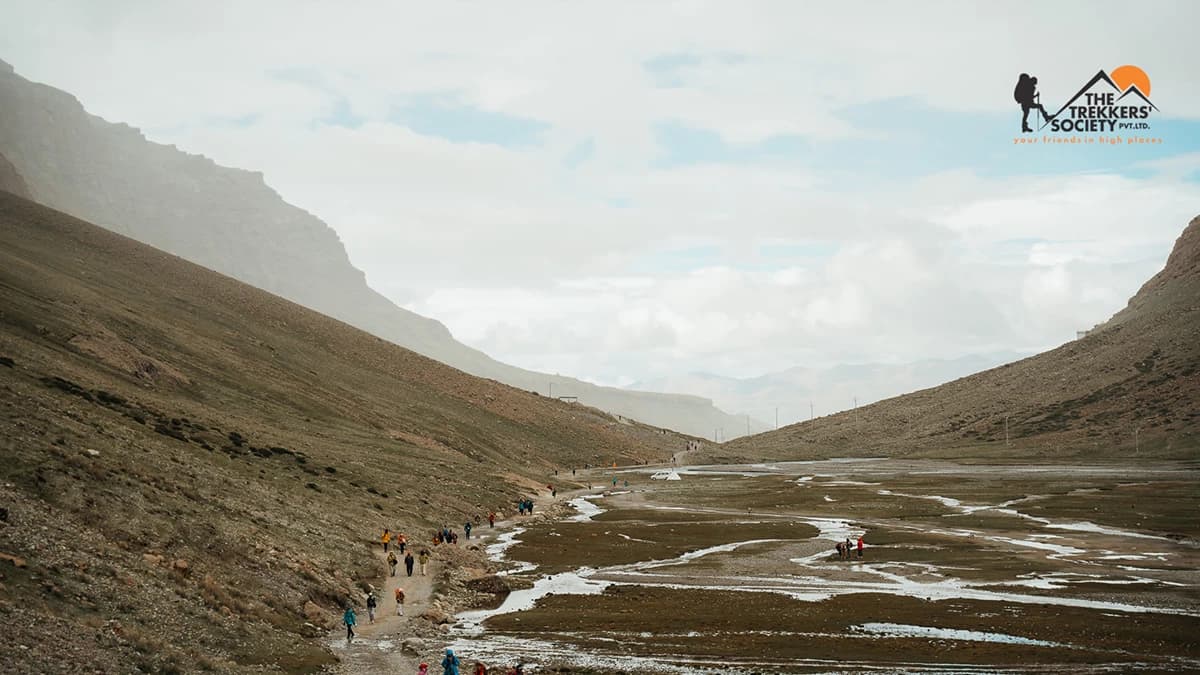Kailash Manasarovar Tour (Fly In - Fly Out)
Kailash Manasarovar Tour (Fly In-Fly Out)
Today marks your arrival at Tribhuvan International Airport in Kathmandu. Our office staff will greet you upon arrival and escort you to your hotel. In the evening, you will have free time to explore on your own.
In the morning, we will visit Pashupatinath Temple, Guheshwori Devi Temple, and Budhanilkantha (sleeping Vishnu OR Jal-Narayan). Following lunch, we will visit the monkey temple, which is also referred to as the Swayambhunath temple.
After breakfast, we will visit Kathmandu Durbar Square and the Monkey Temple (Swayambhunath Stupa) in the morning. Later in the afternoon, we can explore the bustling streets of Thamel, where we can shop for souvenirs and enjoy some local cuisine at a nearby restaurant. It will be a wonderful way to immerse ourselves in the culture and vibrant atmosphere of the city.
The morning after breakfast, we will transfer you to the international airport for your flight to Lhasa. This flight is renowned for being one of the most spectacular trans-Himalayan journeys. The duration of the flight from Kathmandu to Gonggar Airport in Lhasa is approximately one hour and ten minutes. Upon your arrival in Lhasa, our guide will be waiting to greet you at the airport and will escort you to your hotel located in the city center.
- Gonggar airport to Lhasa city: 65 km | 1 hr.
- Altitude of Lhasa: 3,650 m. | 11,972 ft.
Full-day sightseeing tour in Lhasa. Today, you will visit the Potala Palace, which is the winter residence of the Dalai Lama (outside circuit only); Norbulinkha Palace, located in the heart of the town, which formerly functioned as the summer residence of the Dalai Lama. Both locations are steeped in history and cultural importance, providing insight into the spiritual essence of Tibet and finally, Jokhang Temple. Afterward, you'll have the chance to explore the vibrant local markets and taste the traditional Tibetan cuisine. As the day comes to a close, take a moment to enjoy the breathtaking views of the surrounding mountains and immerse yourself in the unique culture that defines this ancient city.
Today, you will visit the Sera Monastery—one of Tibet's most important monasteries located in the northern corner of the city; and you'll visit the Drepung Monastery, renowned as one of the largest monasteries in Tibet, once accommodated approximately 10,000 monks dedicated to the practice of Buddhism. The monastery is located approximately 10 kilometers northwest of Lhasa city, situated on a mountain slope.
After breakfast in Lhasa, begin your scenic drive toward Shigatse, Tibet’s second-largest city. The route passes through breathtaking landscapes — crossing the Kamba La Pass (4,794 m), where you’ll get your first spectacular view of Yamdrok Lake, one of Tibet’s three sacred lakes. Continue along winding mountain roads to reach Karo La Pass (5,045 m), where you’ll see the majestic Nojin Kangtsang Glacier up close.
En route, stop in Gyantse, a charming historical town known for the Gyantse Dzong fortress and the Palcho Monastery, featuring the iconic Kumbum stupa.
Drive onward to Shigatse, the cultural and administrative center of western Tibet. Upon arrival, visit the Tashilhunpo Monastery, the traditional seat of the Panchen Lama.
After an early breakfast, embark on a long but scenic drive from Shigatse to Saga. The journey takes you across the vast Tibetan plateau, passing through Lhatse and small nomadic settlements surrounded by snow-capped peaks. The route follows the Brahmaputra River (Yarlung Tsangpo), offering incredible views of its deep valleys and turquoise waters.
As you approach Saga, the landscape changes dramatically — with open plains, distant Himalayan ranges, and the raw beauty of western Tibet. Saga serves as an important stopover point for travelers heading toward Lake Manasarovar and Mount Kailash.
Today is possibly the most anticipated day of our lives. We will set off from Saga for Lake Manasarovar as usual after breakfast. We will proceed westward from Saga across the arid, elevated Tibetan plateau. The journey takes us through various Tibetan settlements, expansive pastures, and lofty mountain passes. We will make a brief stop at the Mayum-La checkpoint, where the Chinese army will review our travel papers, passports, and other necessary documents.
We'll take a short break for a picnic lunch on the grasslands or along the riverbed after we clear thecheckpoint. Afterward, we will drive over the steep Mayum-La mountain pass, which stands at 5,220 meters, on our way to Lake Manasarovar. After an hour and a half of driving from Mayum La Pass, we will arrive at Lake Manasarovar's eastern coast, where we will disembark and board eco-vehicles to explore the lake. The tour around the lake lasts approximately one and a half hours, ending at Chiu Gompa Monastery, located on the west coast of the lake, where we will stay for the night.
Our morning routine will include religious rites, prayer, and a sacred ablution. After lunch, we will depart Lake Manasarovar and head to Darchen. We will be in Darchen in 45 minutes, which is 37 kilometers farther away.
After check in to Hotel, we will visit and see the magnificent views of Kailash from south. It will take around 2 hours to reach Asthapad and return to Darchen.
Tarboche (Yam Dwar) serves as the meeting place for local horses, yaks, and porters. If you hired a local porter or horse, they will meet you here and trek with you from here on. Depending on your fitness level and walking speed, the journey from Tarboche (Yama Dwar) to Dhirapuk might take anywhere from six to seven hours. The elevation of Deraphuk is 5080 meters (16,663 ft). With a gentle climb, the path is simple.
From Yama Dwar, those taking part in the trekking portion proceed to Deraphuk. The remaining members who are not traveling to Dhirapuk will board a transport and return to Darchen, where they will remain for three days. People who are staying in Darchen have to wait for their group members to come back from their Parikrama trip.
Today presents significant challenges and is the most demanding day of this journey. We will undertake a journey of approximately 22 km through the demanding rugged and rocky highlands, characterized by a windy and freezing environment, to reach Zutulphuk. Since, we must cover a significant distance today, it is very crucial that we prepare and embark from Deraphuk early morning at 5 a.m., Chinese time.
The journey from Deraphuk begins with an uphill trek; however, the path leading to “Dolma La” (the highest point) and “Gaurikunda” (the sacred lake), features a combination of flat sections and ascents. The majority of the trail traverses elevations of 5,000 meter or more; it is understandable if one experiences breathlessness or headaches. We ought to make an effort to keep our speed constant and moderate, though.
Kindly carry small bag-pack where you will put packed lunch, water bottle, personal medicine, dried fruits, and chocolates. The weather in this region can be quite unpredictable, so it's crucial to bring adown jacket and a raincoat with you to ensure you're fully prepared. People may not be there when you need an assistant because everyone walks at a different speed depending on their degree of fitness.
Evening, we reach Zutulphuk and stay overnight in a very basic guesthouse with dormitory bed rooms with no toilet facility inside the guesthouse-building. We have to be mentally ready for going out to answer the nature’s call.
Today represents the end of this celestial journey. Following breakfast, we collect our belongings and set off for Darchen in the morning. The approximately 7-kilometer path can be completed in three to four hours, starting from Zutulphuk and concluding at Zongdou (trek ending point). After all participants have arrived at the trek's ending point, you will board a vehicle and drive to Darchen.
This 4 km stretch will require about 20 minutes. We will meet other participants who are waiting for us in Darchen, and then we will continue our journey back to Saga.
- Zutulphuk to Zongdou: 8 km | 4 hours trek.
- Zongdou to Darchen: 4 km | 20 minutes drive.
- Darchen to SAGA (4500 m): 495 km| 8 hrs.
The trip from Saga to Shigatse lasts approximately eight to nine hours, traversing the expansive, isolated, and rugged pasturelands of Tibet. On our journey, we will stop for a picnic lunch before continuing to Lhatse, located about 298 kilometers from Saga. A further 150 kilometers of driving will then take us to Shigatse. We expect to reach Shigatse in the evening, where we will stay overnight.
Our destination today is Lhasa, the realm of the Potala Palace. The Northern Highway, which most of the time parallels the river gorge of the Brahmaputra (also known as Yarlung Zanbo in Tibet), will be used to make today’s journey. While traveling, we can briefly pause to appreciate the landscape and scenery. For individuals who are interested in photographing the natural beauty of the Tibetan highlands and are in search of adventure, this road excursion is an excellent choice. From Shigatse, the journey to Lhasa will require approximately four hours. A train journey from Shigatse to Lhasa is an alternative to traveling by vehicle.
Free day in Lhasa on your own. Rest and do shopping in the tibetian market.
The morning after breakfast, our guide drops you off at the Gonggar airport for your flight to your onward destination.
We will transfer you to Tribhuvan International Airport for your flight back home. According to international flight regulations, you should check in at the airport counter three hours before your departure time.
- Accommodation in Kathmandu on twin sharing basis
- Transportation in Kathmandu (Arrival/ departure transfers)
- Sightseeing tour within Kathmandu (as per the program)
- Kathmandu/ Lhasa/ Kathmandu flight ticket
- Veg. meals (breakfast, lunch & dinner) during the whole yatra
- Tibet group visa
- Tibet permit and permit for Kailash Manasarovar area
- Drinking water for the entire journey (we advise to carry water bottle to keep warm/boiled water)
- Transport in Tibet by Bus
- Sightseeing entry fees in Tibet
- A truck for bringing foods and other logistics
- Oxygen in the Bus for emergency use
- Staff team (cook, helpers and Sherpas- 1 leader + 1 cook + 4 helpers)
- Permit, visa, salary, transport, accommodation for staff team
- Porters in Nepal-China border while going and coming back
- Duffel bag, bag pack, hat and rain poncho (on a non-returnable basis)
- All applicable taxes and service charges
- International flight ticket
- Personal expenses
- Travel insurance
- Any additional cost that occurs due to unforeseen circumstances & Natural calamity
- Emergency evacuation or ambulance charge or medical expenses incase of emergency situation
- Tips and gratitude for staff team and driver
- Horse and porter during the Parikrama
- Any extra cost against transport and accommodation occurs due to early return from the trip
- Any services that is not mentioned above




